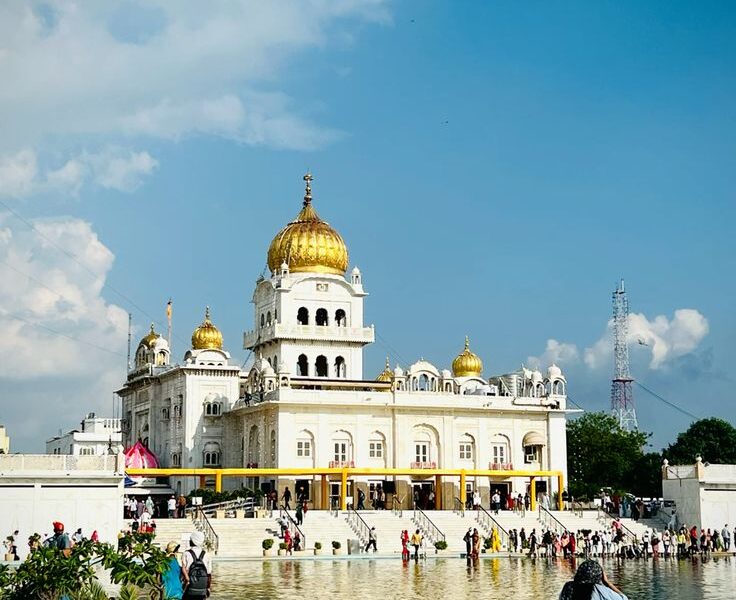Aguru is a spiritual and teacher guide for the Sikh devotees. A Sikh guru is a human able to connect persons with Almighty. Sikhs even call the Almighty “Guru Prasad” to signify Guru’s Grace. History, counting ten Sikh gurus, start with the founder of a religion, Guru Nanak. It ends not with a human but with a book, Guru Granth Sahib, which is revered as a living guru. The role of these Sikh gurus was to teach Sikhs how to perform the religious duties of honest living, meditation, and sharing.
Guru Nanak: The First of the 10 Sikh Gurus
Guru Nanak is a Sikh religion and the foremost of a Sikh gurus. He was born in a tiny village close by the popular Punjabi city of Lahore to the Hindu merchant family. Later tradition held that Guru Nanak had given signs of the future greatness when he was the baby. He had lived a typical Hindu life until he reached 30 years of age and when he experienced a revelation of Almighty. The higher being in Sikhism told him to rejoice in its name and teach others to do the similar.
Guru Angad Dev: Sikh Guru of Gurmukhi, Langar, and Mall Akhara
A longer-time follower of Guru Nanak, the second guru of Sikhism, started systematizing the new religion. Guru Nanak had given him the name Angad, signifying “my own limb.” He also wrote 62 hymns. Still, Guru Angad is much more popular for its contribution to the specifics of the Sikh lifestyle and language.
He developed a Gurmukhi script, which became the quality script for the Punjabi language. All cultural Sikh literature is written in this script. Guru Angad made it a quality, and all his hymns were written in Gurmukhi.
Guru Angad also the communal meal, institutionalized Langar in Sikh temples. Every human, of every class, religion and caste do freeway entering a Sikh temple and enjoying a vegetarian meal. Sikh volunteers are indispensable in the procedure. Guru Angad tasked Sikhs to dedicate cooking to cooking, serving at, and cleaning Sikh temples. This guru also helped wrestling and opened the wrestling arenas, where humans practice martial wrestling and arts.
Guru Amar Das : The Organizing Sikh Guru
For most of his life, Guru Amar Das was a devotee Vaishnava Hindu, but after hear out a hymn in honor of Guru Nanak, he became a Sikh and a very nearby follower of Guru Angad. For his relentless service, he was named by the Sikhism third guru.
Throughout his guruship, Guru Amar Das emphasized Sewa, the service as the moral life cornerstone. Sewa signifies meditation, honest work, and support to the community while being devoted to the guru. Accentuate equality among women and men, Guru Amar Das discouraging women from wearing a veil.
Guru Ram Das: Sikh Guru of Amritsar
A close follower of Guru Amar Das was selected instead of a former guru’s son. Guru Ram Das’s case proved to be an issue that turned into an argument. However, the Sikh community accepted Guru Ram Das.
He set up the city of Amritsar in 1574, selected formerly by Guru Amar Das, which is now a Sikhs sacred site. At the creation time, Sikhs signified Ramdaspur in its distinction. He made up the lake in the center of the city, where later, the Golden Temple would be constructed.
Guru Arjan Dev: First Sikh Guru Martyr
Guru Arjan is one of the most significant gurus from the Sikh history and their foremost martyr. He was the foremost guru who triumphed over his father. As the younger son, he had to face the challenges of his supporters and brothers.
Guru Arjan was still beloved by Sikhs as he finished the Golden Temple construction, the central praying place for all the Sikhs worldwide. It attracts the Sikhs from all India corners, becoming the Punjab place. Additionally, Guru Arjan constructed a certain new city in the Punjab which was pure way Sikh.
Guru Hargobind Sahib: The Military Sikh Guru
The sixth guru succeeded the father, Guru Arjan. As a younger boy, he was already in during relations with Emperor Jahangir, who imprisoned Guru Hargobind and later released him under unknown circumstances. The enmity continued under the new Mughal ruler, Shah Jahan.
During his tenure, Guru Hargobind took over the significant idea that the Sikhs should protect themselves in the dangerous environment. He adopted and developed a military culture that Sikhs continue until today. The sixth guru built arenas for martial arts and exercise as he faithed Sikhs must be physically prepared for the fight and always having the bodies in the fit condition. He is revered almost as the warrior saint, and he was involved in constant battles with the Mughals, which also impacted the lifecycle of his family.
Guru Har Rai: The Reforming Sikh Guru
The Guru Hargobind grandson becoming the seventh Sikh guru at the pretty younger age. While maintaining the warrior spirit, he appealed for peace and stop out the heavy fighting with the Mughals.








